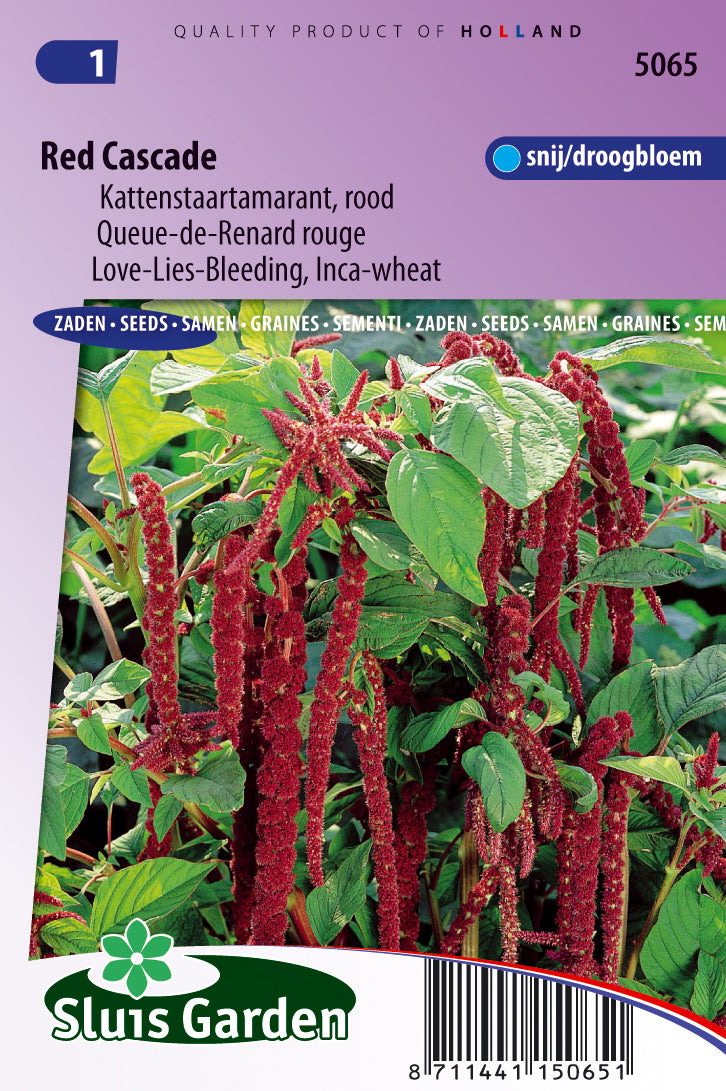1
/
of
1
Amaranthus caudatus red
Amaranthus caudatus red
Regular price
1.250 KWD
Regular price
Sale price
1.250 KWD
Unit price
/
per
Shipping calculated at checkout.
Couldn't load pickup availability
Amaranthus caudatus, commonly known as Love Lies Bleeding or Red Amaranth, is a striking annual plant with long, cascading flower spikes in a vibrant red color. Here's a guide on how to grow Amaranthus caudatus red:
**1. Planting Time:**
- Sow Amaranthus caudatus seeds directly outdoors after the last frost date in spring. The soil temperature should be warm for optimal germination.
**2. Soil Preparation:**
- Choose well-draining soil with a pH between 6.0 and 7.5.
- Amaranthus caudatus is adaptable to various soil types but thrives in fertile soil with good organic content.
**3. Sowing Seeds:**
- Scatter the seeds on the soil surface and lightly press them into the soil. Amaranth seeds are tiny and require light for germination, so avoid covering them with too much soil.
- Space the seeds according to the recommended spacing on the seed packet.
**4. Sunlight:**
- Amaranthus caudatus prefers full sun, but it can tolerate partial shade.
**5. Watering:**
- Keep the soil consistently moist, especially during the germination period. Once established, amaranth is relatively drought-tolerant.
- Water at the base of the plant to prevent fungal issues.
**6. Fertilizing:**
- Amaranth generally doesn't require heavy fertilization. If your soil is poor, you can incorporate a balanced fertilizer or well-rotted compost into the soil before planting.
**7. Thinning:**
- Once the seedlings are a few inches tall, thin them to the recommended spacing. This ensures adequate room for the plants to grow and prevents overcrowding.
**8. Mulching:**
- Apply a layer of mulch around the plants to help retain soil moisture and suppress weeds.
**9. Staking:**
- Depending on the variety and growing conditions, some taller amaranth varieties may benefit from staking to support the long flower spikes.
**10. Harvesting:**
- You can harvest Amaranthus caudatus for fresh or dried flowers. For dried arrangements, cut the flower spikes when they are at their peak and hang them upside down to dry in a well-ventilated area.
**11. Companion Planting:**
- Amaranthus caudatus can be planted with other tall or medium-height plants to create a visually appealing garden display.
**12. Pests and Diseases:**
- Amaranth is generally resistant to many pests and diseases. However, keep an eye out for aphids and caterpillars. Use insecticidal soap or neem oil if necessary.
Growing Red Amaranth can add a unique and vibrant element to your garden, whether as a focal point or as part of a colorful mix. Adjust care based on your specific growing conditions and local climate.
**1. Planting Time:**
- Sow Amaranthus caudatus seeds directly outdoors after the last frost date in spring. The soil temperature should be warm for optimal germination.
**2. Soil Preparation:**
- Choose well-draining soil with a pH between 6.0 and 7.5.
- Amaranthus caudatus is adaptable to various soil types but thrives in fertile soil with good organic content.
**3. Sowing Seeds:**
- Scatter the seeds on the soil surface and lightly press them into the soil. Amaranth seeds are tiny and require light for germination, so avoid covering them with too much soil.
- Space the seeds according to the recommended spacing on the seed packet.
**4. Sunlight:**
- Amaranthus caudatus prefers full sun, but it can tolerate partial shade.
**5. Watering:**
- Keep the soil consistently moist, especially during the germination period. Once established, amaranth is relatively drought-tolerant.
- Water at the base of the plant to prevent fungal issues.
**6. Fertilizing:**
- Amaranth generally doesn't require heavy fertilization. If your soil is poor, you can incorporate a balanced fertilizer or well-rotted compost into the soil before planting.
**7. Thinning:**
- Once the seedlings are a few inches tall, thin them to the recommended spacing. This ensures adequate room for the plants to grow and prevents overcrowding.
**8. Mulching:**
- Apply a layer of mulch around the plants to help retain soil moisture and suppress weeds.
**9. Staking:**
- Depending on the variety and growing conditions, some taller amaranth varieties may benefit from staking to support the long flower spikes.
**10. Harvesting:**
- You can harvest Amaranthus caudatus for fresh or dried flowers. For dried arrangements, cut the flower spikes when they are at their peak and hang them upside down to dry in a well-ventilated area.
**11. Companion Planting:**
- Amaranthus caudatus can be planted with other tall or medium-height plants to create a visually appealing garden display.
**12. Pests and Diseases:**
- Amaranth is generally resistant to many pests and diseases. However, keep an eye out for aphids and caterpillars. Use insecticidal soap or neem oil if necessary.
Growing Red Amaranth can add a unique and vibrant element to your garden, whether as a focal point or as part of a colorful mix. Adjust care based on your specific growing conditions and local climate.
Share

